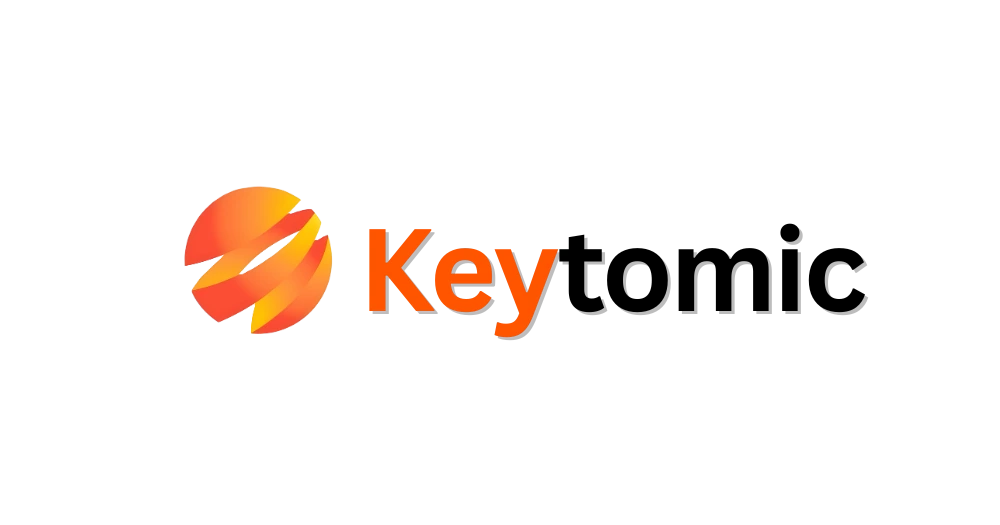TL;DR
AI-powered discovery tools are rewriting the rules for brand visibility. Instead of simply ranking on Google, your brand must be recognized, cited, and trusted by AI systems. With the right structure, content strategy, and monitoring systems—such as those built into Keytomic—you can ensure your brand isn’t just found, but favoured in the age of generative search.
The New Discovery Landscape
In recent years, brand discovery has shifted dramatically. While traditional search engines like Google once served as the main gateway for finding brands, today many users are turning to chat-style AI tools and generative search experiences. These tools don’t just present a list of links—they provide answers. Brands that aren’t optimized for this environment risk being invisible.
What this means for your business: You’re no longer just optimising for clicks and rankings. You’re optimising for inclusion—being part of the curated answer that an AI presents.
What Is AI-Driven Brand Discovery?
AI-driven brand discovery refers to how brands show up when empowered search systems (like chat bots, large language model interfaces, and generative engines) provide answers instead of mere links. These systems rely on a combination of structured content, authority signals, and machine-friendly formats.
As one article puts it: “The way people search is changing … customers still want answers, but they’re not relying solely on Google.”
In this context, brand discovery is measured by visibility within those answers—not just by being clickable. If your content isn’t set up for machine readability, strong authority, and correct context, you’ll be excluded from the consideration set.
Key Drivers of Brand Visibility in AI Search
Drivers Compared
| Driver | Why It Matters | Brand Action |
|---|---|---|
| Structured content & schema | AI systems favour content with clear formatting, headings, FAQ sections, markup. MarketingProfs+1 | Review content for heading structure, add FAQ schema, optimise metadata. |
| Authority & trust | AI engines prefer sources that show credibility and up-to-date information. Adobe for Business | Publish high quality content, secure trusted citations, maintain reputation. |
| Conversation-style intent alignment | Queries in AI search are more natural, question-based. Entrepreneur | Use natural language queries in content, focus on “how”, “what”, “which”-type questions. |
| Machine readability | Technical structure (load speed, mobile optimisation, crawlability) still matters. MarketingProfs | Check page performance, mobile UX, schema markup, sitemap. |
These combined elements elevate your brand from being just discoverable to being recommended.
Why Traditional SEO Isn’t Enough Anymore
| Traditional SEO Focus | Why It’s Insufficient in AI Search | What to Add |
|---|---|---|
| Keyword ranking & backlinks | AI doesn’t just rank links—it synthesises answers. Entrepreneur | Focus on being part of the answer, not just the link. |
| Page one appearance | A link may never be clicked if the answer is already given by the AI | Ensure your content is directly cited or summarised. |
| Traffic volume | Visibility might shift from clicks to mention and inclusion in AI responses | Track “AI citations” and brand mentions inside AI results. |
In short: If you only optimise for yesterday’s web, you’ll fall behind tomorrow’s discovery.
How to Adapt Your Brand Discovery Strategy
5.1 Understand how your audience asks questions
Map out the exact queries your target audience would use in a conversational way. Think: “What’s the best SEO automation tool for small teams?” rather than “SEO automation tool”. These natural language queries are what generative engines respond to. befoundonline.com
5.2 Audit your content for machine-friendly structure
Conduct an audit of your website and content library. Look for:
- Clear header hierarchy (H1, H2, H3)
- FAQ sections and conversational Q&A style copy
- Schema markup (Article, FAQ, Organization)
- Fast load times and mobile optimisation
5.3 Build authority and citation potential
Visibility in AI results often comes down to who the AI trusts. That means:
- Getting mentioned in third-party publications
- Being referenced by authoritative sites
- Maintaining up-to-date content and credentials
Adobe’s data shows that brands need to be “recognized as credible sources by intelligent agents”. Adobe for Business
5.4 Monitor AI-based visibility metrics
Traditional metrics (rankings, clicks) are still valuable, but you also need to monitor:
- How often your brand appears in AI responses
- Context in which you are referenced (e.g., “trusted leader” vs “also a player”)
- Platforms where you are cited (ChatGPT, Perplexity, Gemini)
This is part of staying ahead.
How Keytomic Helps Your Brand Get Discovered
6.1 Optimised Content Workflow
With Keytomic you can automate content audits, check for structure and schema, and optimise copy for conversational queries—all in one platform. Instead of manually reviewing each page, the system flags what needs attention.
6.2 Brand Visibility Insights
Keytomic’s dashboard tracks not only clicks and rankings, but how often your brand is mentioned in AI-driven contexts, and collects data on what queries your brand is being discovered for. You’ll see when you become part of the conversation.
6.3 Efficient Strategy for Busy Teams
If you’re a small marketing team or solo founder, the scale and complexity of AI discovery can feel overwhelming. Keytomic simplifies it—aligning your content, structure, and visibility efforts so you don’t need to chase dozens of separate tools.
Industry Insight
Your insight content goes here…
Practical Checklist for Brand Discovery Success
Here’s a hands-on checklist you can apply this week:
- Map 10 conversational queries your audience is likely to ask.
- For top 5 existing pages, verify headings, add FAQ sections, implement schema markup.
- Publish at least one third-party mention or guest article about your brand.
- Use Keytomic (or equivalent) to track how often you are referenced by AI engines.
- Set a monthly review: Which queries are you appearing for? Which not? Adjust content accordingly.
- Update older content to ensure freshness, relevance and machine readability.
- Ensure your site loads quickly on mobile (<3 seconds) and is crawlable with clean sitemap.
Common Pitfalls to Avoid
- Writing content that sounds great to humans but lacks clear structure for machines.
- Ignoring the conversational nature of queries in gen-AI environments.
- Focusing only on traditional keyword rankings and neglecting mention/citation metrics.
- Assuming once optimised, you’re done. The AI discovery landscape will continue to evolve.
- Underestimating the role of brand trust and third-party references in AI visibility.
Future Trends in AI-Based Brand Discovery
- Voice + chat + multi-modal search: Users will ask questions not just in text but voice and with image prompts—your brand must be ready across formats.
- AI agents executing actions: Discovery may lead directly to action (purchase, sign-up) via agents—not just visits. Entrepreneur+1
- Brand reputation as algorithmic signal: The trustworthiness and brand identity are becoming formal inputs in AI discovery logic.
- Dynamic content adaptation: Content may need to adapt in real-time to query trends and platform shifts. Staying agile will matter.
TL;DR
Your summary text here…
Your insight goes here…
Want to stay updated?
Subscribe to our newsletter for weekly AI insights and opportunities.
Subscribe NowConclusion
Brand discovery is no longer simply about being visible on search results. It’s about being part of the conversation that an AI presents. If your brand isn’t structured, trusted and optimised for machine readability, you risk invisibility in an era where discovery happens via conversation, not by clicking.
Platforms like Keytomic help bridge the gap—automating the audit, structure, and monitoring required to ensure your brand is the answer when it matters. The future of brand discovery is happening now. Be part of it.



